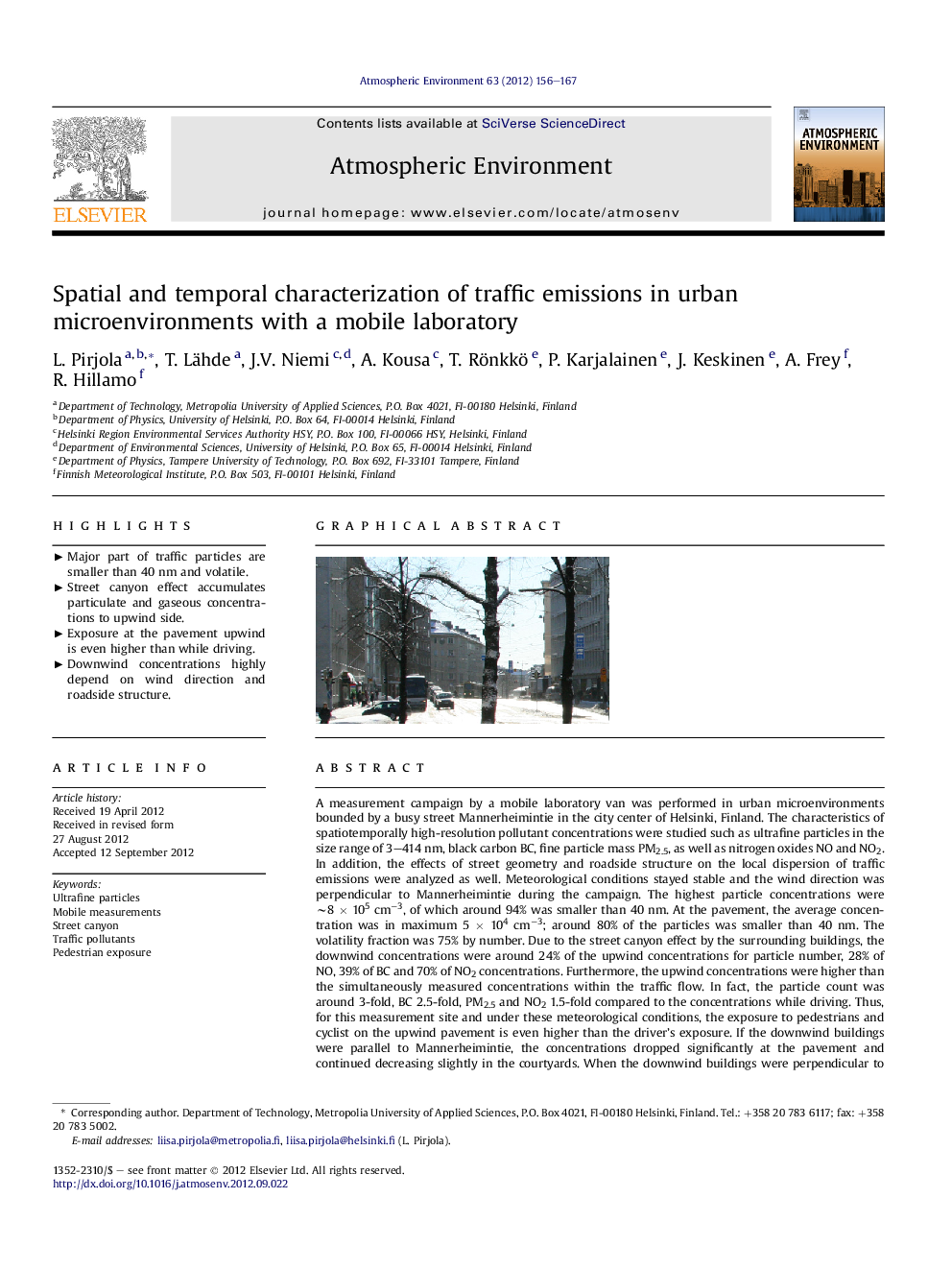| Article ID | Journal | Published Year | Pages | File Type |
|---|---|---|---|---|
| 4438608 | Atmospheric Environment | 2012 | 12 Pages |
A measurement campaign by a mobile laboratory van was performed in urban microenvironments bounded by a busy street Mannerheimintie in the city center of Helsinki, Finland. The characteristics of spatiotemporally high-resolution pollutant concentrations were studied such as ultrafine particles in the size range of 3–414 nm, black carbon BC, fine particle mass PM2.5, as well as nitrogen oxides NO and NO2. In addition, the effects of street geometry and roadside structure on the local dispersion of traffic emissions were analyzed as well. Meteorological conditions stayed stable and the wind direction was perpendicular to Mannerheimintie during the campaign. The highest particle concentrations were ∼8 × 105 cm−3, of which around 94% was smaller than 40 nm. At the pavement, the average concentration was in maximum 5 × 104 cm−3; around 80% of the particles was smaller than 40 nm. The volatility fraction was 75% by number. Due to the street canyon effect by the surrounding buildings, the downwind concentrations were around 24% of the upwind concentrations for particle number, 28% of NO, 39% of BC and 70% of NO2 concentrations. Furthermore, the upwind concentrations were higher than the simultaneously measured concentrations within the traffic flow. In fact, the particle count was around 3-fold, BC 2.5-fold, PM2.5 and NO2 1.5-fold compared to the concentrations while driving. Thus, for this measurement site and under these meteorological conditions, the exposure to pedestrians and cyclist on the upwind pavement is even higher than the driver's exposure. If the downwind buildings were parallel to Mannerheimintie, the concentrations dropped significantly at the pavement and continued decreasing slightly in the courtyards. When the downwind buildings were perpendicular to Mannerheimintie, a gradual reduction in the concentrations between the buildings was observed. However, at a distance of approximately a hundred meters a parallel side street which was a street canyon, started to affect the concentrations resulting in an increased exposure risk for pedestrians and cyclists. Understanding the local transport and the dispersion of traffic emissions are important for city planning and air quality assessment.
Graphical abstractFigure optionsDownload full-size imageDownload high-quality image (278 K)Download as PowerPoint slideHighlights► Major part of traffic particles are smaller than 40 nm and volatile. ► Street canyon effect accumulates particulate and gaseous concentrations to upwind side. ► Exposure at the pavement upwind is even higher than while driving. ► Downwind concentrations highly depend on wind direction and roadside structure.
